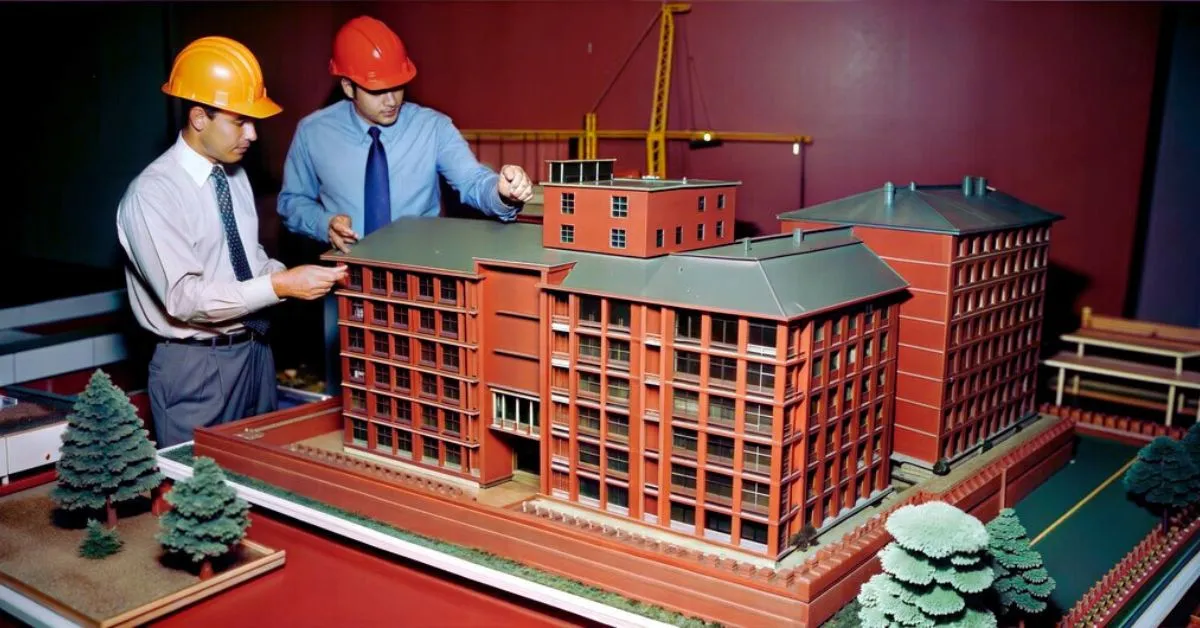Stichting Bouwresearch: Pioneering Innovation in the Dutch Construction Industry
Stichting Bouwresearch (SBR) has left an indelible mark on the Dutch construction industry through its extensive research and development efforts. Established in 1959, SBR played a crucial role in advancing construction techniques, materials, and technologies. This article provides a comprehensive overview of SBR’s history, operations, impact, and legacy, offering a deep dive into the contributions of this influential institute.
The Genesis of Stichting Bouwresearch
Founding and Early Vision
In 1959, Stichting Bouwresearch was founded with a mission to stimulate and coordinate research in the construction sector. The institute was established in Rotterdam, reflecting a strategic choice to be at the heart of Dutch industry and technological innovation. Herman Witte, the first chairman of SBR, envisioned an industry that needed to embrace innovation to address emerging challenges. His leadership was pivotal in steering SBR’s focus toward identifying and developing new construction materials, practices, and technologies that would shape the future of the industry.
Early Achievements and Focus Areas
During its formative years, SBR concentrated on exploring new construction techniques and materials. The institute’s research aimed to improve the efficiency and effectiveness of building processes. This early work laid the groundwork for future advancements in construction technology and set a precedent for rigorous, research-driven approaches to industry challenges.
The Evolution of SBR: Fusion and Expansion
The 2003 Transformation
In 2003, Stichting Bouwresearch underwent a significant transformation, adopting a new name and entering a new phase of its evolution. The rebranding marked the beginning of a renewed focus on enhancing research capabilities and fostering stronger industry partnerships. This period of rejuvenation was crucial for adapting to the rapidly changing landscape of the construction industry.
The Merger with CURnet: Creating SBRCURnet
A landmark moment in SBR’s history occurred in 2013 with the merger of SBR and CURnet, resulting in the formation of SBRCURnet. This merger was a strategic move to strengthen research capabilities and expand the institute’s influence across the construction sector. By combining resources and expertise, SBRCURnet was better positioned to tackle complex problems and develop effective strategies for construction companies. The merger enhanced the institute’s ability to address industry challenges and drive innovation in construction practices.
The Closure of SBRCURnet and Transition
The End of an Era: Closure in 2017
On December 31, 2017, SBRCURnet was formally dissolved as an independent entity. The closure marked the end of an era for the institute, which had played a pivotal role in advancing construction research in the Netherlands. The decision to dissolve the organization was driven by the need to integrate its activities into other specialized bodies.
Integration into CROW and ISSO
Following its closure, the activities of SBRCURnet were divided between two organizations. The ground, road, and water construction activities were incorporated into CROW, a leading organization for infrastructure and public works. Meanwhile, the built environment-related activities were transferred to ISSO, an institute specializing in research and innovation for the built environment. This transition ensured that the valuable research and knowledge developed by SBR would continue to benefit the construction industry through these specialized organizations.
Structure and Operations of SBR
Headquarters and Strategic Location
Stichting Bouwresearch was initially established in Rotterdam but later moved to Delft, a prominent technological city in the Netherlands. This strategic relocation was aimed at leveraging the city’s rich pool of expertise and research resources. Delft’s status as a hub for technological innovation provided SBR with access to cutting-edge research facilities and a vibrant academic community, further enhancing its research capabilities.
Staff and Expertise
At the time of its merger, SBR had approximately 50 staff members, including researchers, scientists, and industry professionals. This diverse team was instrumental in generating new ideas and facilitating the exchange of knowledge within the construction sector. The collective expertise of SBR’s staff contributed significantly to the institute’s ability to drive innovation and address industry challenges.
Leadership and Vision
Herman Witte, the first chairman of SBR, is credited with establishing the institute’s vision and mission. His leadership was crucial in shaping SBR’s research agenda and fostering a culture of innovation. Jeannette Baljeu, the last director of SBR, played a key role in overseeing the merger and ensuring a smooth transition of the organization’s activities and knowledge to its successor organizations. Her efforts helped preserve and extend the impact of SBR’s work.
Research and Publications: A Legacy of Knowledge
Extensive Research Output
SBR was renowned for its extensive research and publications on various aspects of construction. The institute released numerous books and papers covering topics such as material management, cost and expense control, financing, and policy planning in the construction field. These publications provided valuable insights and guidelines for industry professionals and contributed to the advancement of construction practices.
Addressing Crucial Issues
SBR’s research also addressed critical issues such as building safety and installation vibrations. By focusing on these important areas, the institute contributed to improving construction standards and practices, enhancing the safety and performance of buildings across the Netherlands.
Collaborative Efforts and Practical Contributions
Collaboration with Industry Committees
SBR was actively involved in collaborations with committees responsible for shaping new building and construction knowledge. These partnerships allowed SBR to translate its research findings into practical solutions and recommendations for the industry. The institute’s collaborative approach ensured that its research output was relevant and applicable to real-world construction challenges.
Practical Projects and Recommendations
In addition to its research efforts, SBR undertook projects that provided practical experience and recommendations for construction sites. These projects offered valuable insights into construction practices and helped address specific problems encountered in the field. By bridging the gap between research and practice, SBR played a key role in advancing construction technology and improving industry standards.
The Legacy of Stichting Bouwresearch
Influence on Industry Standards
Stichting Bouwresearch’s contributions have had a lasting influence on the construction industry. The institute’s research and innovations helped shape industry standards, guidelines, and norms, setting benchmarks for quality and performance. The impact of SBR’s work can be seen in the development of standards and practices that continue to guide the construction sector.
Impact on Future Generations
SBR’s legacy extends beyond its immediate contributions to the construction industry. The institute’s work has inspired and influenced generations of builders, architects, and engineers. Its research and innovations have helped shape the careers of professionals in the field and continue to be relevant for new generations of scholars, scientists, researchers, and policymakers.
Conclusion
Stichting Bouwresearch, or SBR, stands as a testament to the power of research and innovation in shaping the construction industry. From its founding in 1959 to its eventual integration into other organizations, SBR’s contributions have left a lasting impact on the Dutch construction sector. The institute’s dedication to advancing construction techniques, materials, and technologies has helped improve industry standards and practices, ensuring a legacy that continues to benefit the industry today. By examining the history, operations, and legacy of SBR, we can appreciate the significance of its work and the enduring influence it has had on the construction industry.
FAQS
What was the primary goal of Stichting Bouwresearch (SBR)?
SBR aimed to stimulate and coordinate research in new construction techniques, materials, and technologies.
When was SBR established?
SBR was founded in 1959.
What significant change occurred in 2003 for SBR?
SBR was rebranded, marking the start of a new phase focused on enhanced research and industry partnerships.
What happened to SBR after its closure in 2017?
Its activities were incorporated into CROW for infrastructure and ISSO for the built environment.
What is SBR’s legacy in the construction industry?
SBR’s research influenced industry standards, practices, and inspired future generations of professionals.






